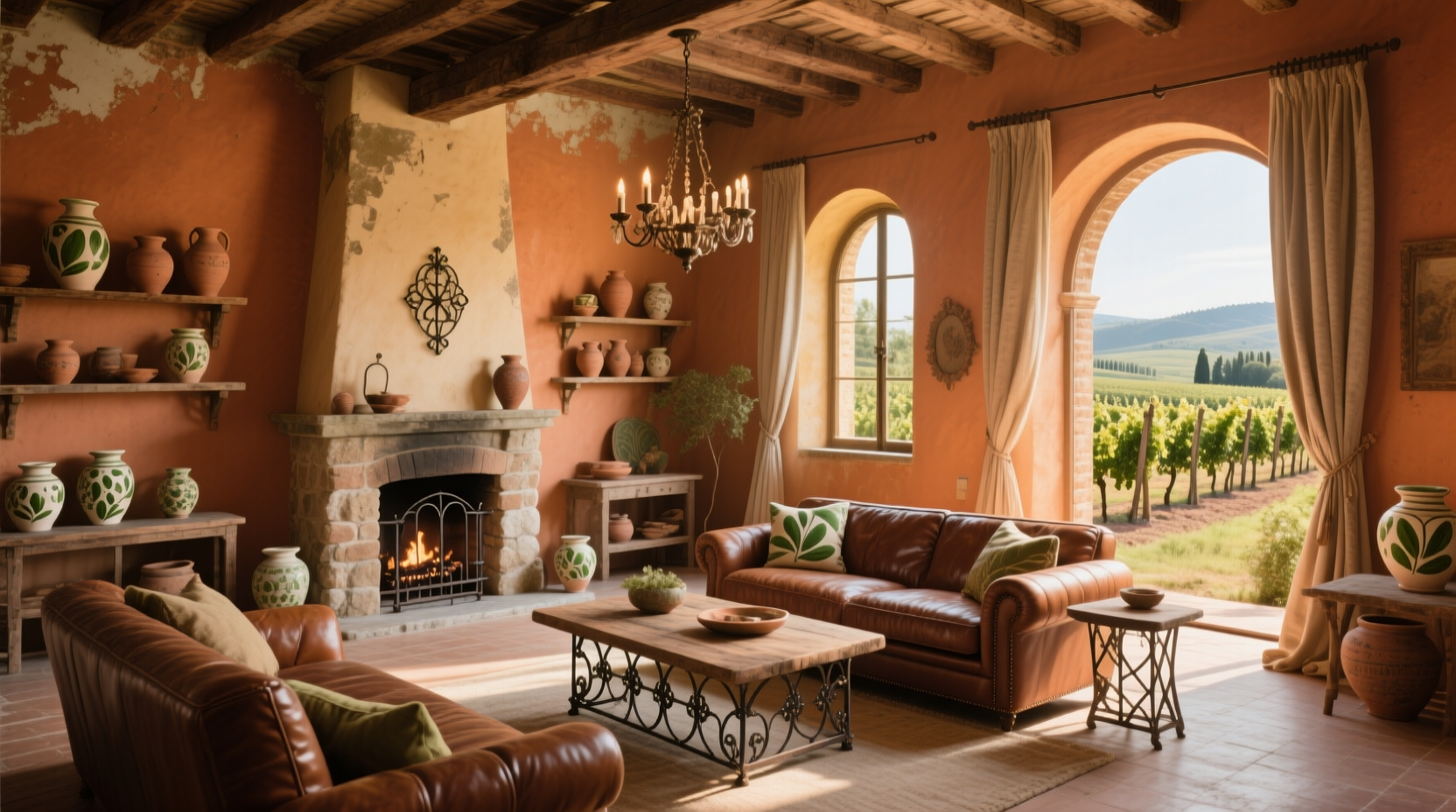Tuscan decor doesn’t whisper. It sings. Warm, golden, sun-soaked, with a bit of earth on its fingers and wine in its breath. When you walk into a Tuscan-inspired living room, it feels like you’ve stepped into a dream of Italy—rolling hills, olive groves, and rustic stone houses perched on them like they’ve been there forever.
But let’s be honest. Bringing that exact atmosphere into your living room is a bit tricky. You don’t have Tuscan hills out your window (unless you’re very lucky). You don’t have the smell of cypress trees drifting inside. What you can have though, is that sunlight-soaked warmth, the textures, the earthy simplicity that makes Tuscan style irresistible.
So here’s the list. 20+ Tuscan living room decor ideas that’ll make your space glow like an afternoon in Florence. Each one carries the heartbeat of Italy—raw, bold, timeless.
1. Sun-Baked Walls With Depth
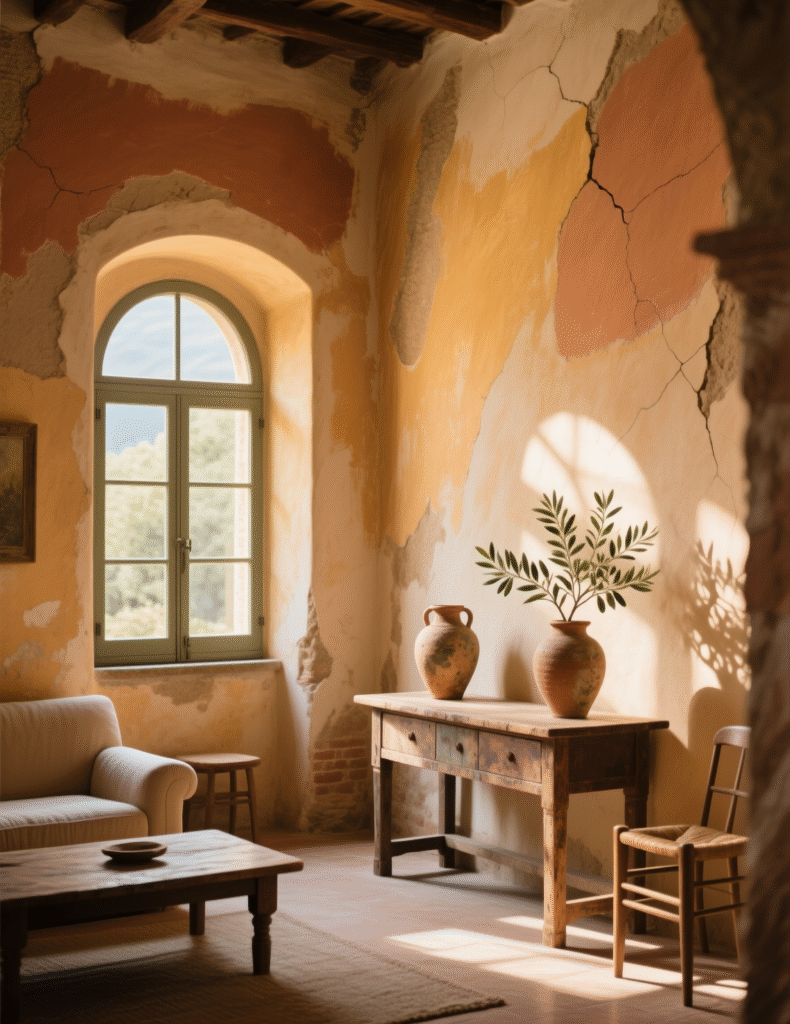
Tuscan walls don’t look perfect. They look alive. Soft plaster, sometimes cracked, sometimes brushed in layers of ochre or terracotta, gives them that storybook texture.
Skip flat paint. Go for earthy tones—amber, cream, muted gold. A faux plaster finish or lime wash can give a living room wall that same sun-baked glow you’d find in an old farmhouse outside Siena. You don’t want sleek, you want history in the paint.
Sit there when the afternoon sun hits, and suddenly you’re in Italy.
2. Terracotta Flooring That Breathes
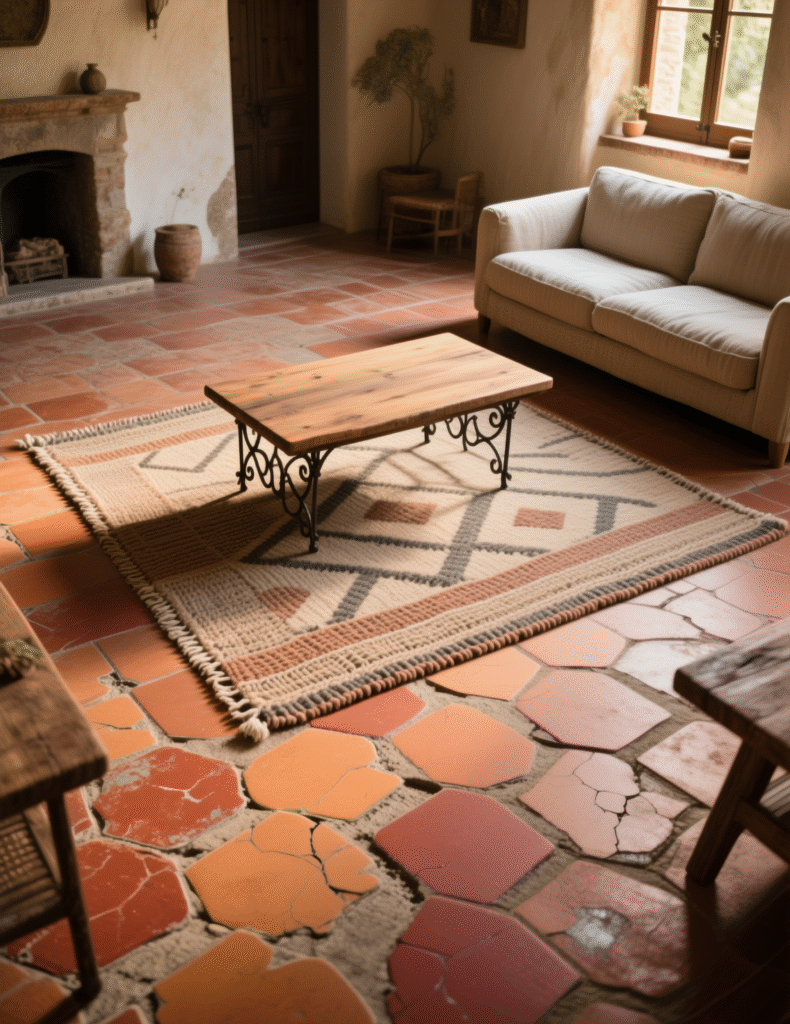
The floor in a Tuscan home feels solid, ancient, like it’s carried hundreds of footsteps before yours. Terracotta tiles are the essence of that vibe. They look simple at first glance, but under sunlight, they warm up like fire.
If terracotta isn’t possible, wide wood planks with a rustic finish can work too. Don’t go glossy. The more imperfections, the better. Throw in a woven rug, maybe even one with faded patterns, and your feet will thank you.
Floors should never feel too new. Tuscany doesn’t do new. It does timeless.
3. Exposed Wood Beams That Anchor the Room
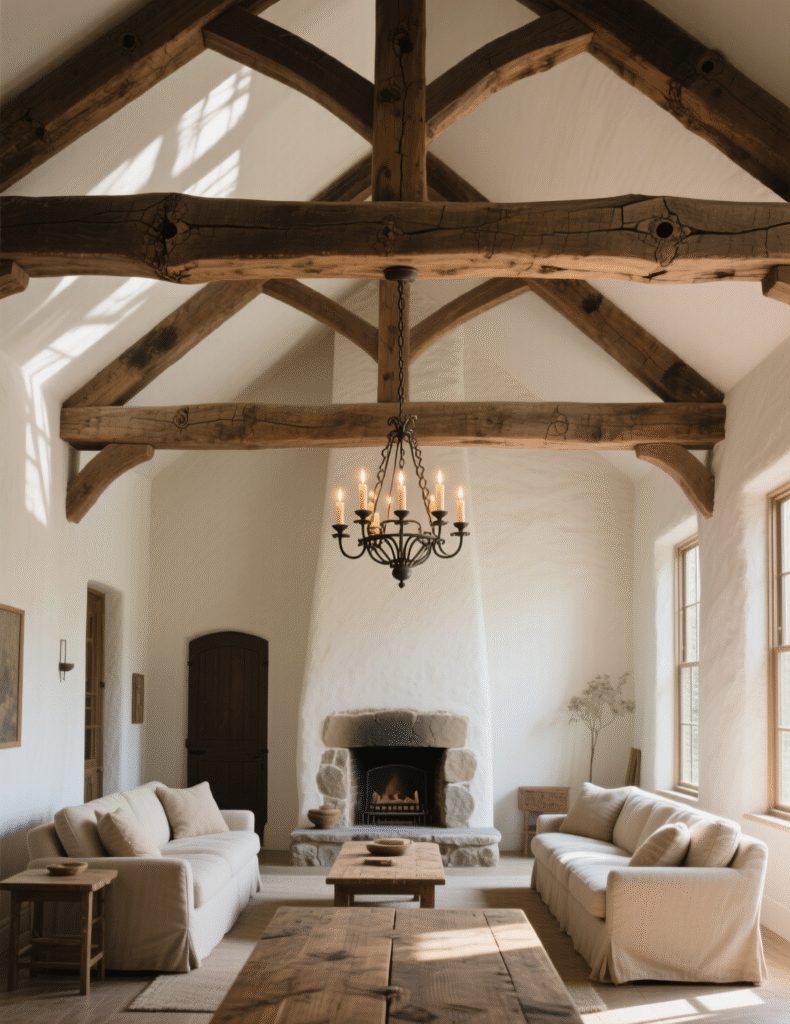
This is Tuscan soul right here. Wood beams, dark and sturdy, crossing overhead like the bones of the house. You look up and they tell you, this is shelter, this is home.
If you already have them, bless your stars. If not, faux beams can work surprisingly well. Go darker with the stain—think walnut, chestnut, oak. And don’t make them too polished. A few nicks, a bit of roughness, that’s what makes them convincing.
It’s almost like the beams hold the sunlight in place.
4. Stone Fireplaces That Ground Everything

Tuscan evenings belong by the fire. Even if you don’t light it often, a stone fireplace makes the living room feel anchored. Rough-cut stone, stacked with a bit of irregularity, feels real and inviting.
A mantel of aged wood above it can complete the look. Decorate it with pottery, candles, maybe a bunch of dried lavender. Nothing fancy. Tuscany isn’t about perfection—it’s about heart.
When guests see that fireplace, they’ll gather around it, without even realizing why.
5. Furniture With Curves and Comfort
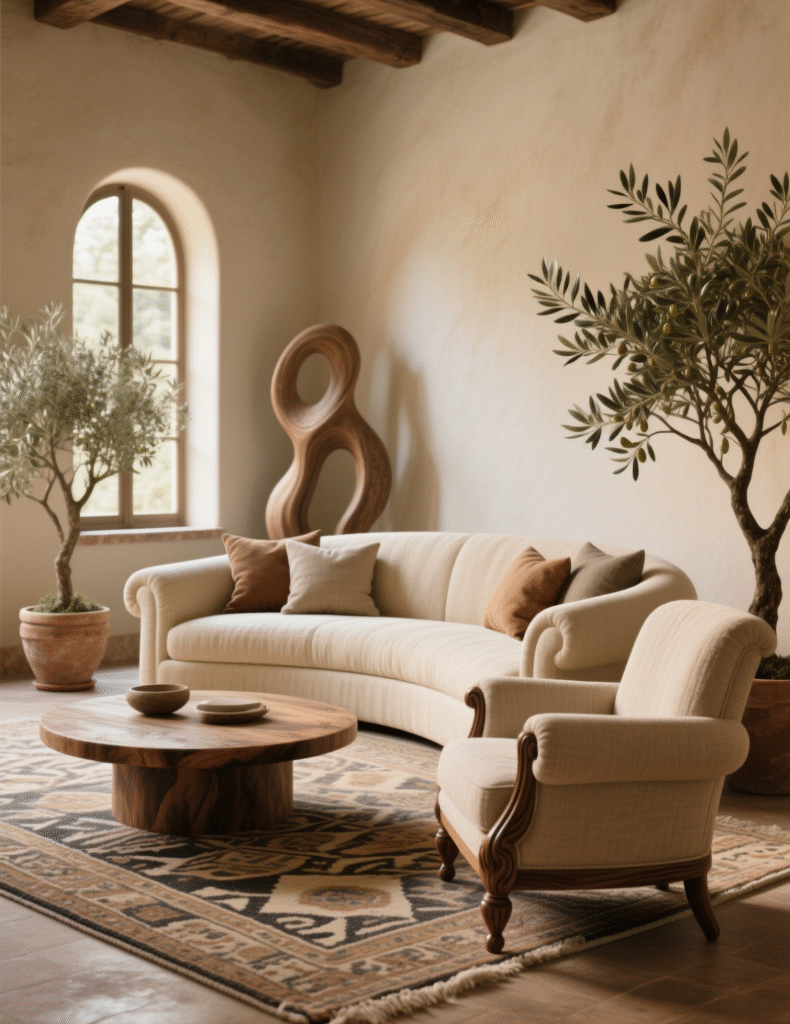
Tuscan furniture doesn’t shout modern. It leans toward generous, classic shapes. Big armchairs, deep sofas, wooden tables with turned legs. They look like they’ve been in the family for generations, even if you just bought them.
Leather works well here, especially warm, slightly worn leather. But linen slipcovers in soft neutrals? Just as good. The idea is comfort that looks grounded, not stiff.
If a chair doesn’t tempt you to sink in for hours with a glass of wine, it doesn’t belong.
6. Natural Light That Feels Endless
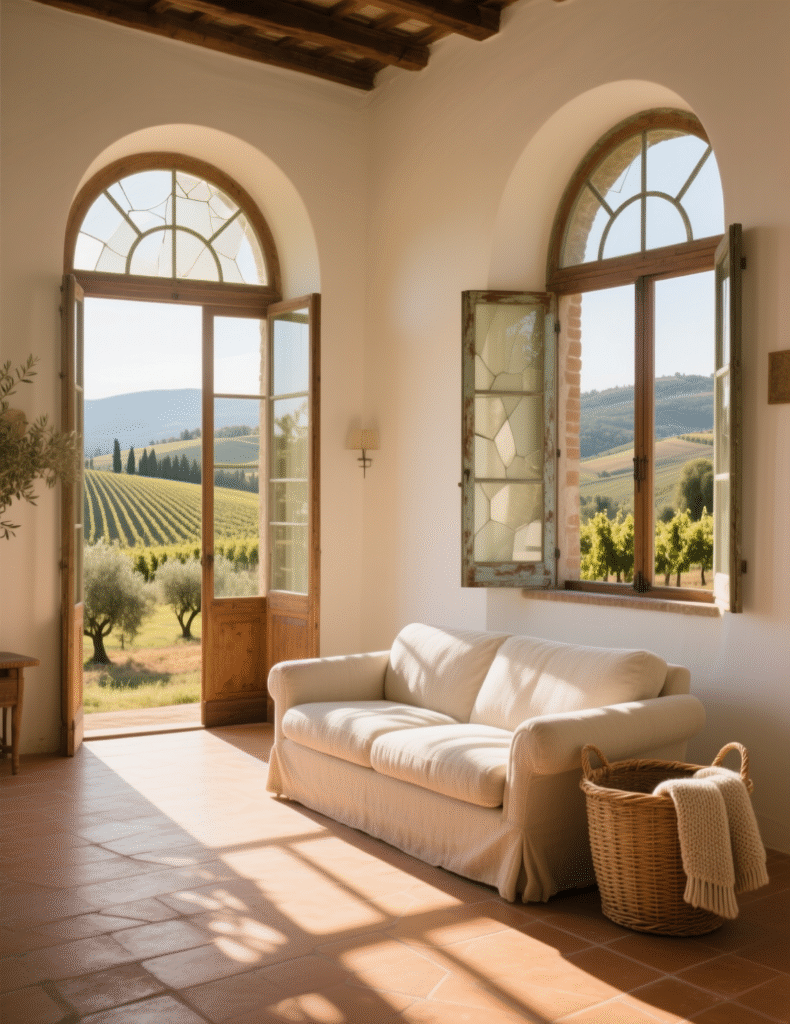
Italian sunlight is a character of its own. In Tuscan design, light isn’t hidden—it’s embraced. Big windows with wooden shutters, sheer curtains that let the glow slip through. You want the daylight to feel like it’s painting the room.
Skip heavy drapery. Choose fabrics that float a bit, maybe with soft creases from being drawn back and forth. Let the window frames be seen, especially if they’re wood.
The room should shift with the day—golden in the morning, honey-like at sunset.
7. Wrought Iron Accents for Subtle Drama
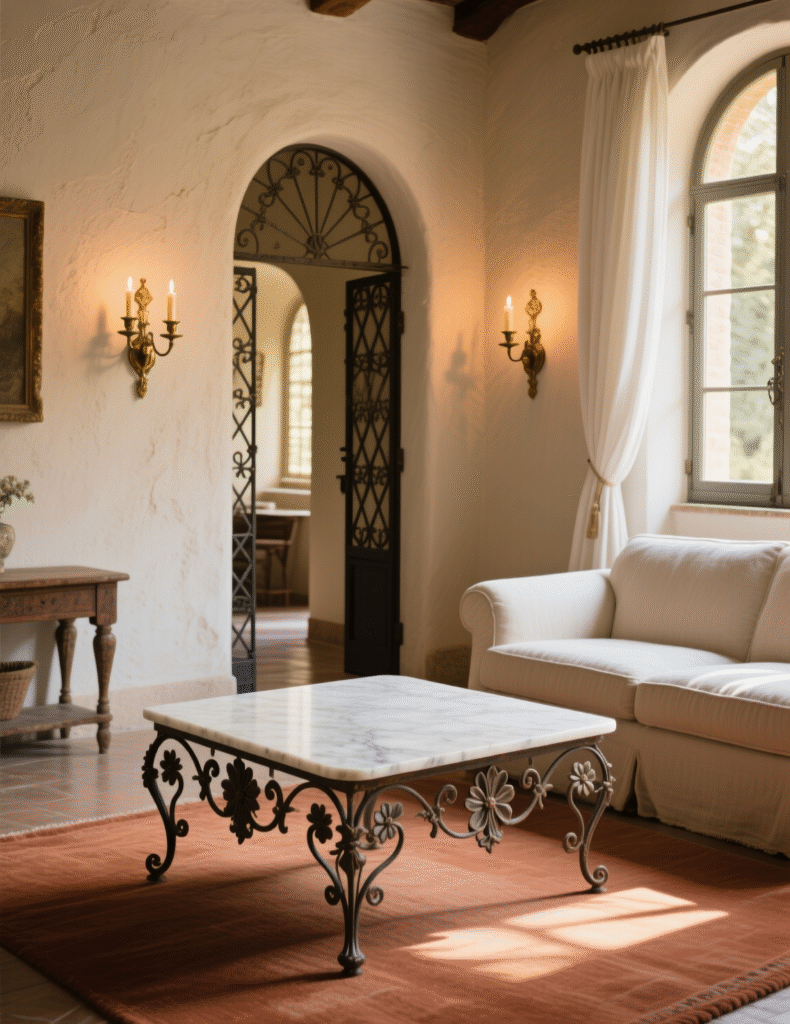
There’s something romantic about wrought iron. It sneaks into Tuscan living rooms through chandeliers, curtain rods, or little side tables with iron legs. Strong yet delicate, it feels handmade, crafted by someone who knew their trade.
A wrought iron chandelier, especially one holding candles (real or faux), changes the mood instantly. Place an iron candelabra on a table, and suddenly you’re in an Italian villa.
Metal should feel aged, not shiny. A hint of rust, a bit of patina—it adds soul.
8. Earth-Toned Fabrics With Patterned Layers
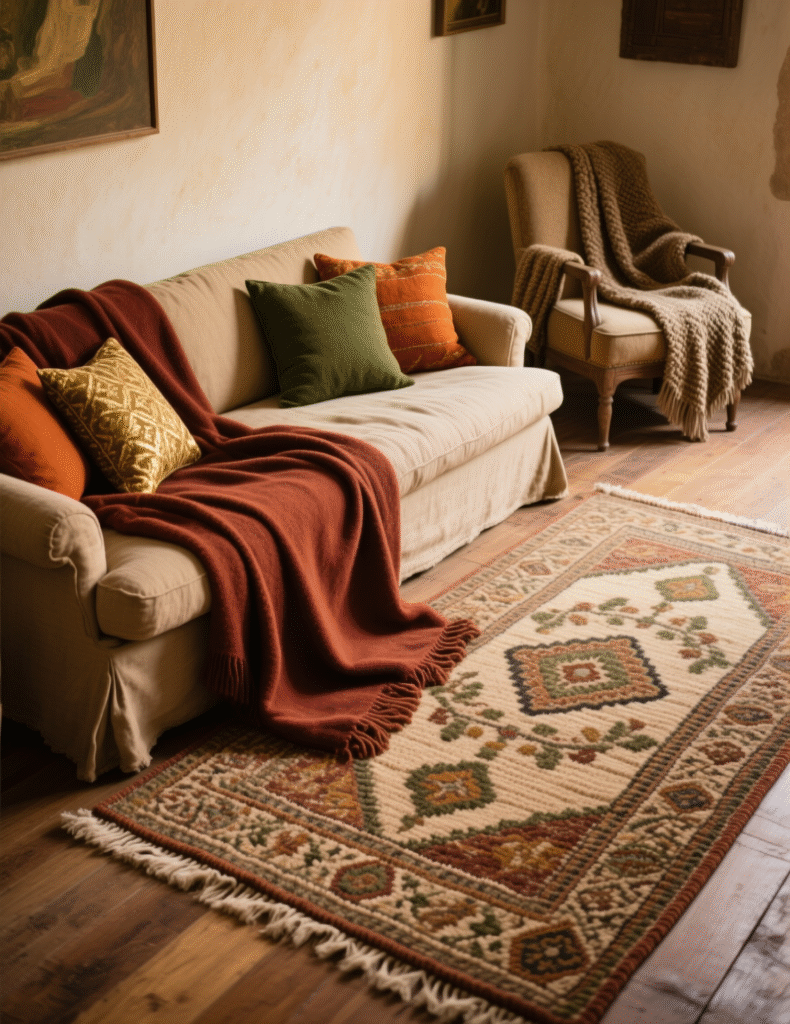
Tuscany doesn’t go for sleek monochrome. Fabrics are rich, layered, and cozy. Think woven throws, patterned pillows, tapestries that tell quiet stories. The palette stays warm: olive green, burnt orange, deep burgundy, soft cream.
A striped or floral pillow thrown casually on a sofa makes the space feel lived in. Mix textures—linen against velvet, wool against cotton. It shouldn’t match perfectly. That’s the charm.
The fabric should feel touchable, not untouchable.
9. Tuscan Art and Pottery That Whispers History

Walls in a Tuscan living room aren’t bare. They hold art, often rustic or classic—landscapes, old-world portraits, maybe a fresco-inspired piece. Nothing too polished.
Ceramic jars, painted pottery, even large urns bring that farmhouse-meets-villa vibe. Place them near a fireplace, on the floor, or in a corner. They should feel like they’ve always been there, not placed yesterday.
The art doesn’t have to be expensive. It just has to carry the weight of story.
10. Olive Branches and Green Touches
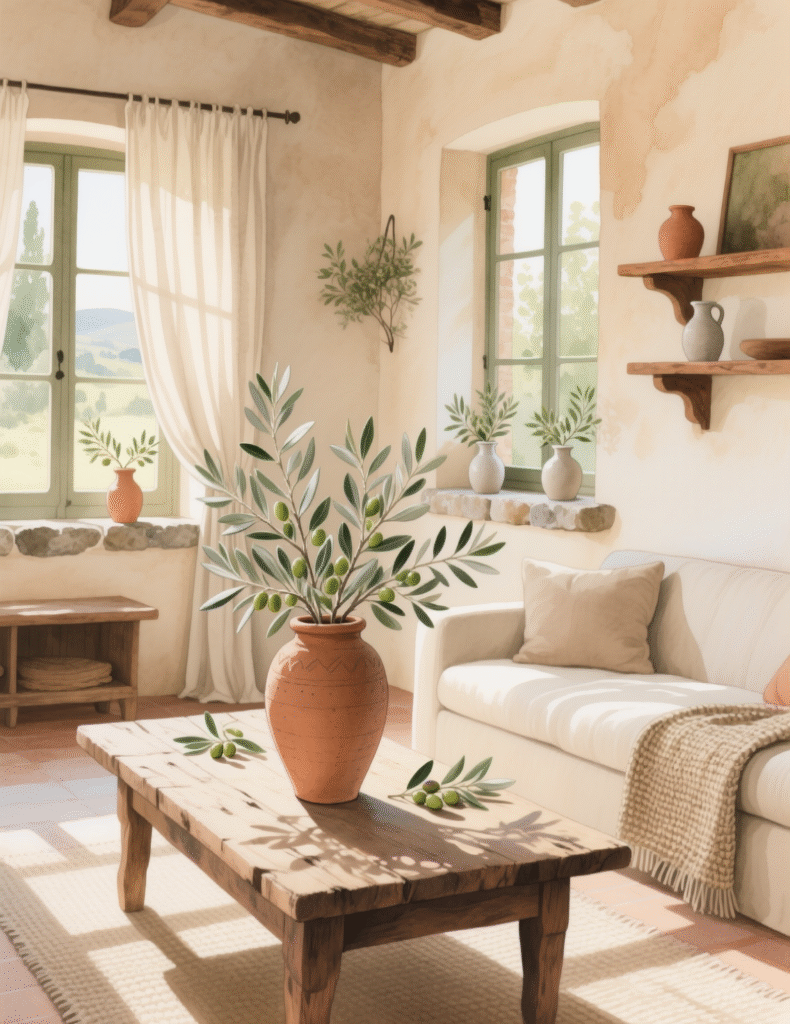
You can’t forget greenery. Tuscan homes breathe with nature inside them. A vase of olive branches, a terracotta pot with rosemary, even a lemon tree if your light allows—it all brings Italy closer.
The greenery should feel effortless, not staged. A slightly wild branch in a clay jug looks far more Tuscan than a manicured bouquet.
These touches remind you that Tuscany is fields and gardens as much as stone and plaster.
11. Arched Doorways and Openings
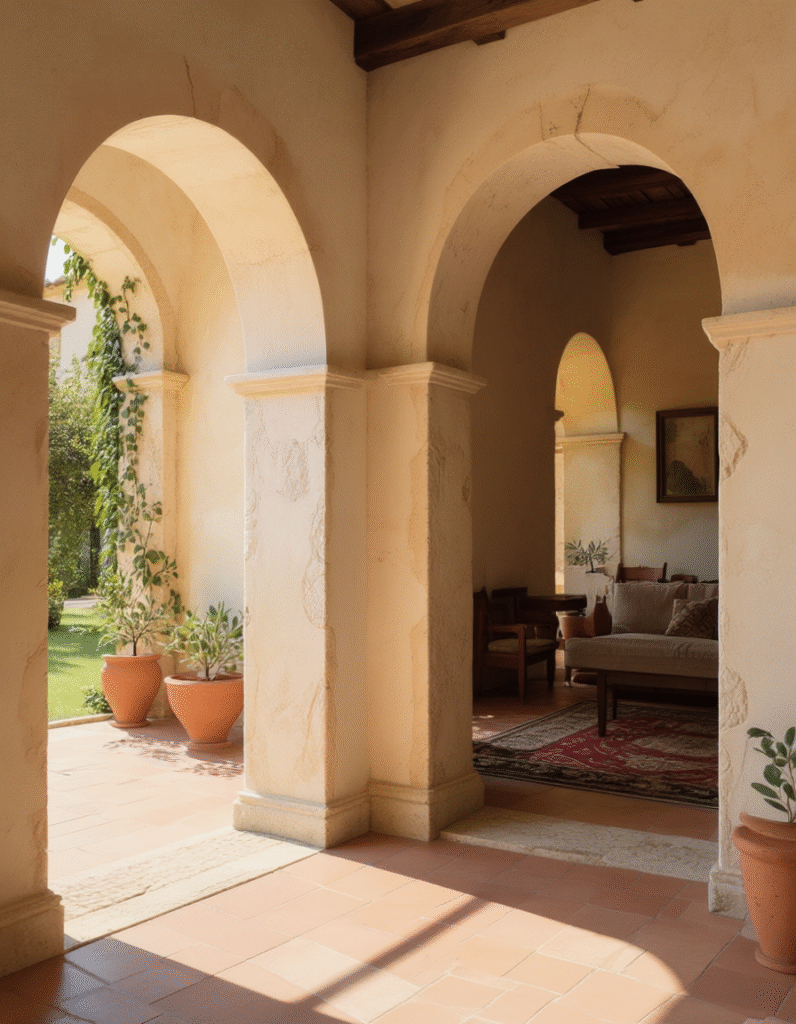
Tuscan design loves curves. A simple arch in a doorway or a rounded wall niche instantly transports the space to Italy.
If you can’t renovate, fake it—arched mirrors or wall hangings mimic the shape and soften the room’s edges. Suddenly your living room feels like it belongs to a centuries-old villa.
12. Warm Candlelight Glow
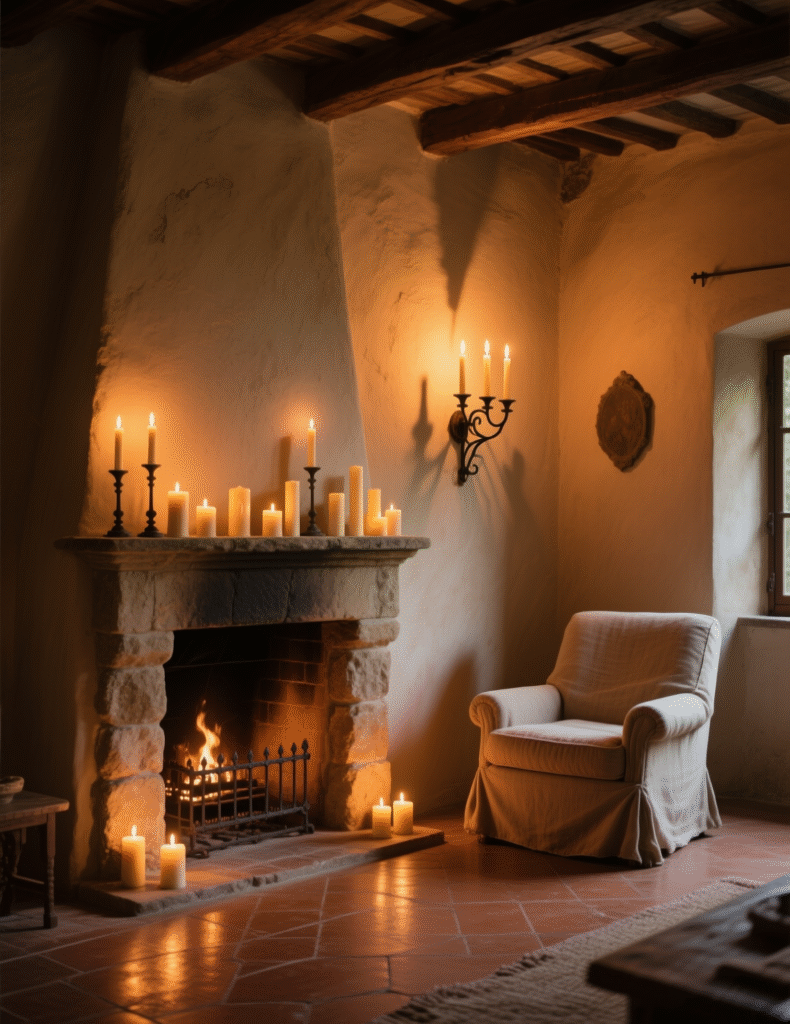
Electric light can’t compete with flame. Scatter candles in clusters—on tables, mantels, or even in old lanterns. The flicker adds that rustic romance Tuscany does so well.
Go for beeswax or off-white candles, not neon-perfect ones. Imperfect edges, melted drips, that’s the mood.
13. Rustic Wooden Doors Inside
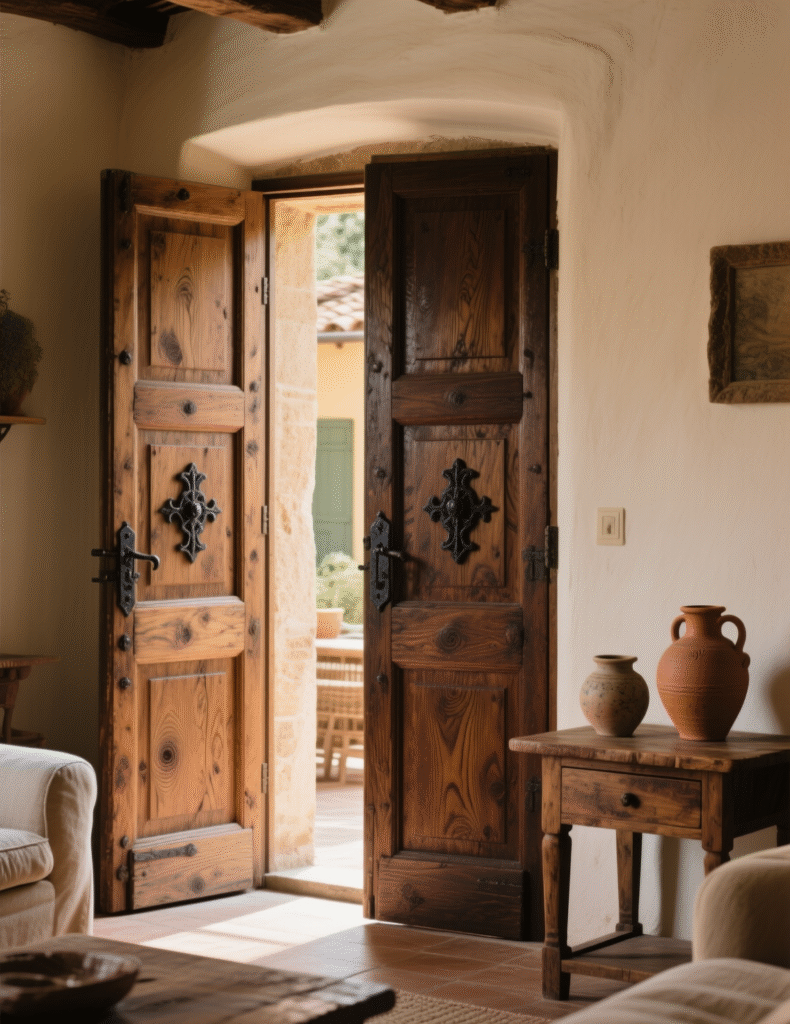
Tuscan homes have doors that look like they’ve weathered storms and still stood tall. A reclaimed wood door or even a sliding barn-style door painted in muted tones can echo that feeling.
The heavier the wood, the better. Handles should be iron or brass, never shiny chrome.
Every time you close it, you’ll feel history in your hand.
14. Mosaic Tile Details
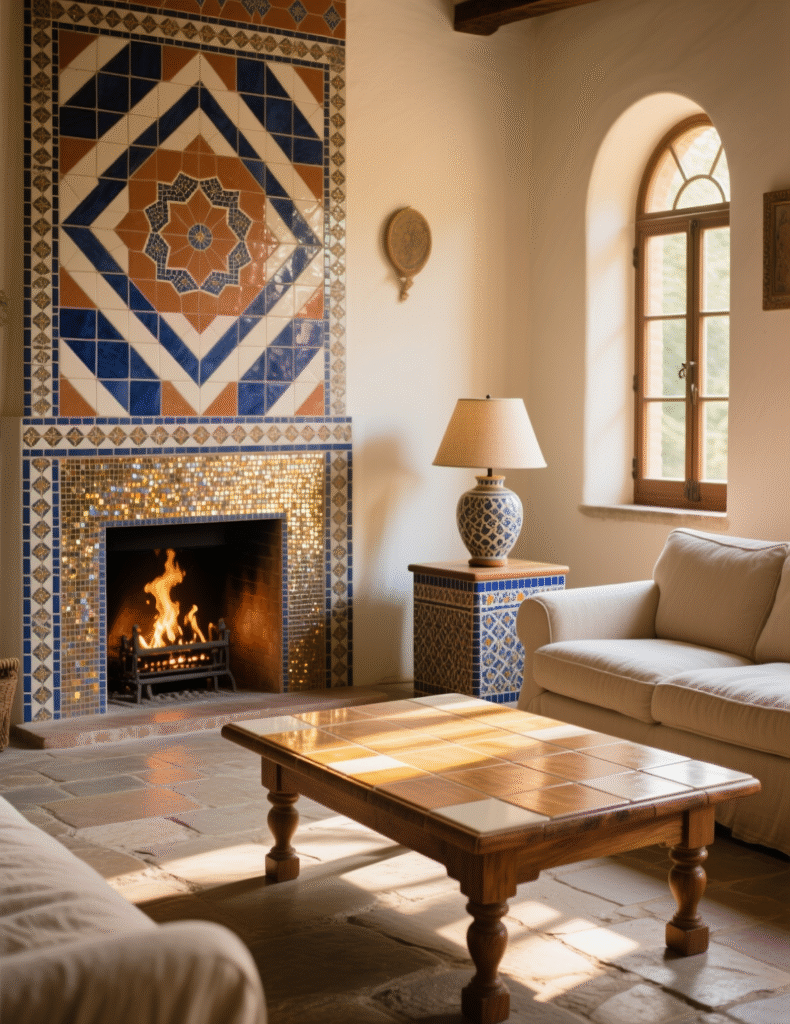
Not big flashy mosaics, but small moments. A tiled tabletop, a border on the fireplace, or even a side table with patterned inlays.
Earthy colors, geometric or floral designs, they sneak charm into the space.
One small mosaic piece can shift the whole energy of the room, like a whisper from Florence.
15. Large Statement Pottery
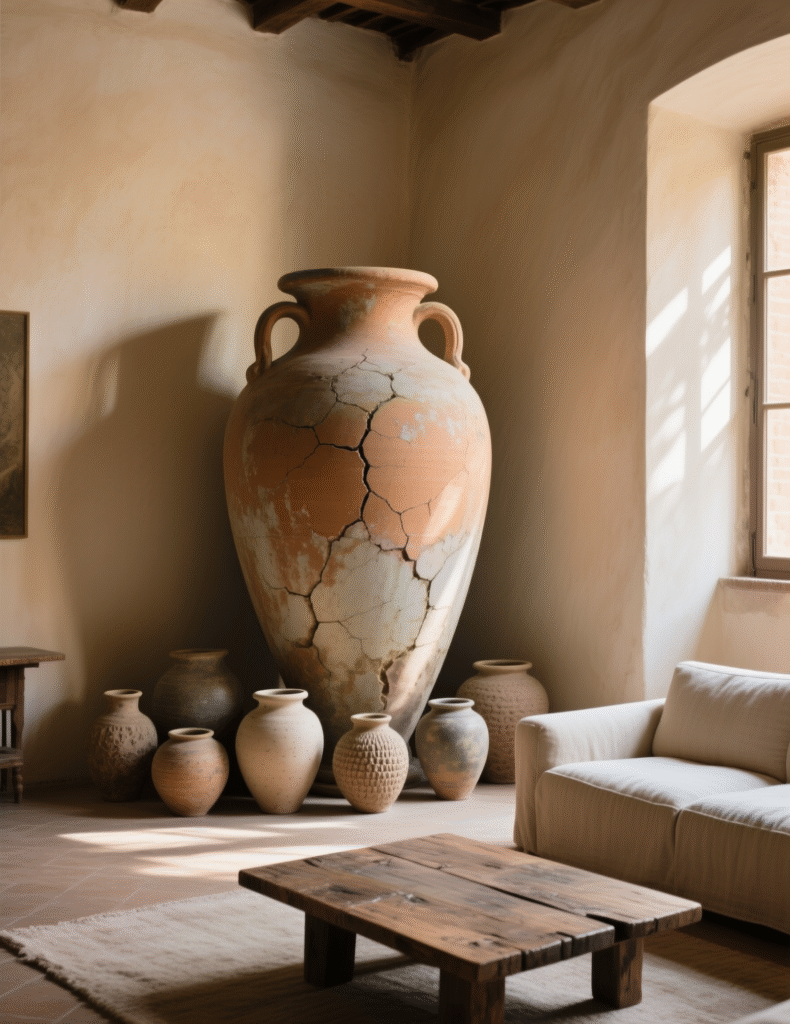
Tuscan rooms love oversized pottery. A tall urn standing in a corner, a huge terracotta pot beside the sofa, or even a big clay jar with a rough finish.
You don’t fill them with much—maybe olive branches, maybe nothing. The pottery itself is art.
Bigger is better here. Let it ground the space like a sculpture.
16. Antique Clocks and Timepieces
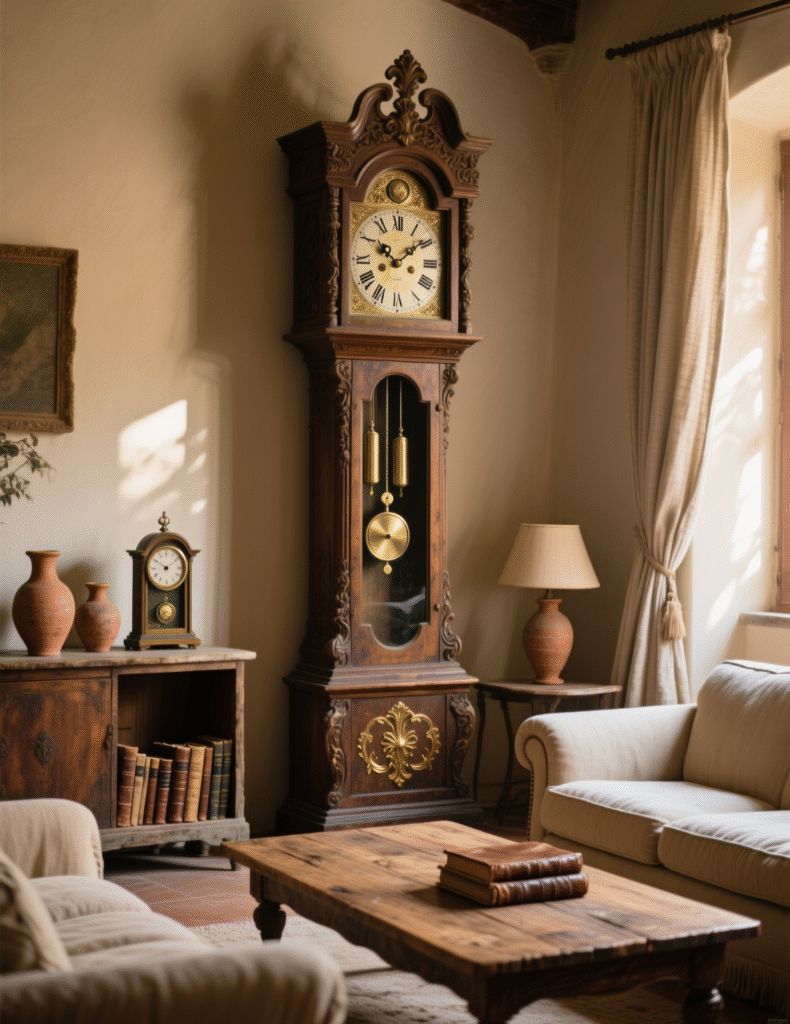
Time in Tuscany seems slower. A big rustic clock on the wall, or a smaller iron one on a shelf, adds that old-world feel.
Don’t go digital. You want something ticking, swinging, maybe even slightly uneven. That imperfection makes it alive.
Every glance at it feels like you’re syncing to a gentler rhythm.
17. Carved Wooden Accents
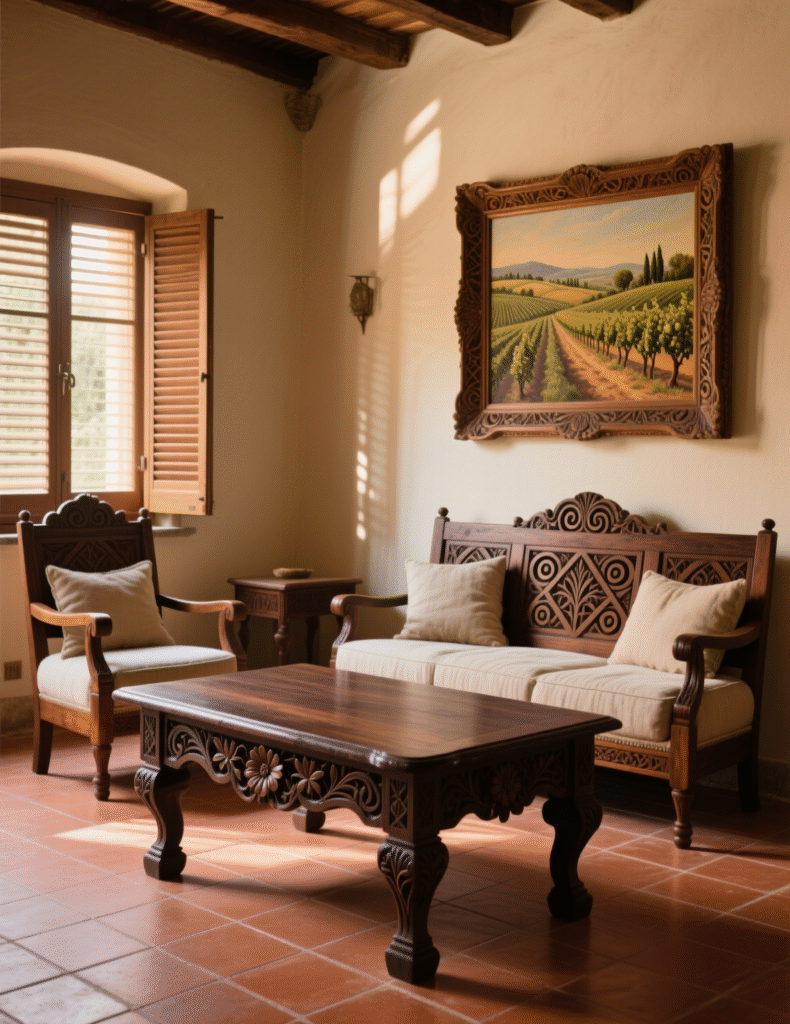
It’s the little carved details that change the room—intricate legs on a side table, a headboard-style wall panel, or even a carved frame for artwork.
They don’t scream luxury, they whisper craftsmanship. Someone’s hand worked the wood, and you can feel it.
Even one carved piece can make the room look layered and authentic.
18. Wine Storage on Display
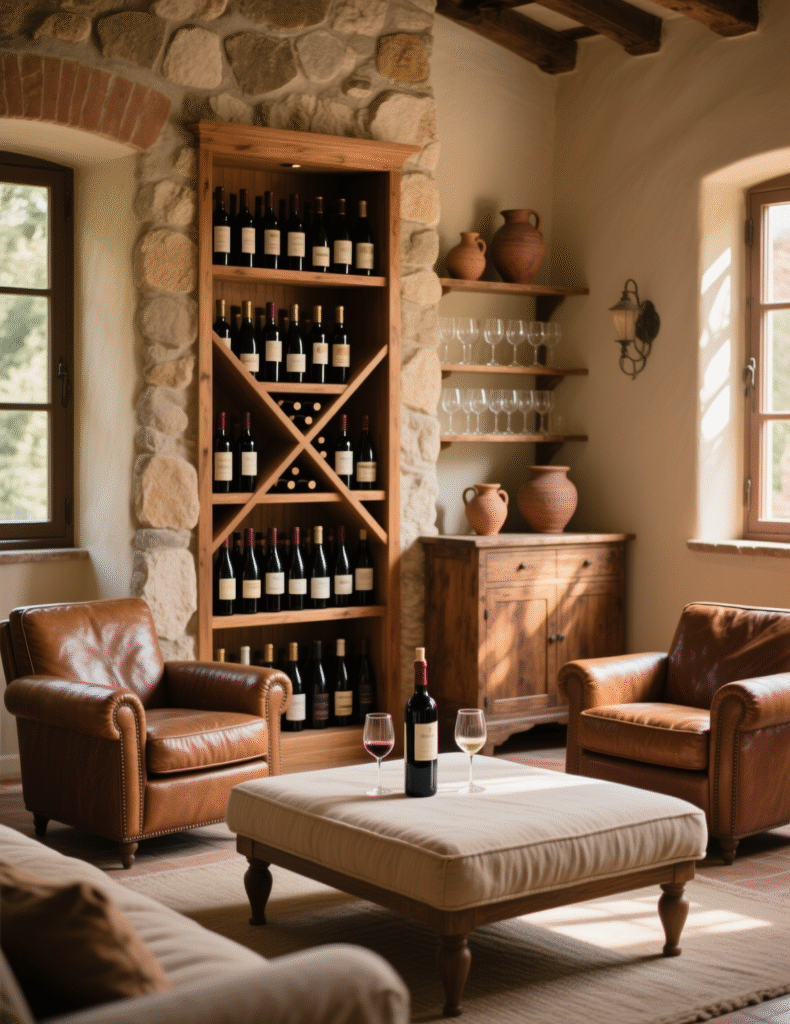
You can’t skip wine in Tuscan living. A small wine rack, a few bottles stacked casually, or a wooden cabinet with glass doors showcasing them—instant atmosphere.
You don’t need a full cellar. Just a nod to the culture. A bottle of Chianti sitting in a straw basket does wonders.
Guests notice it, and they smile.
19. Woven Baskets and Textures
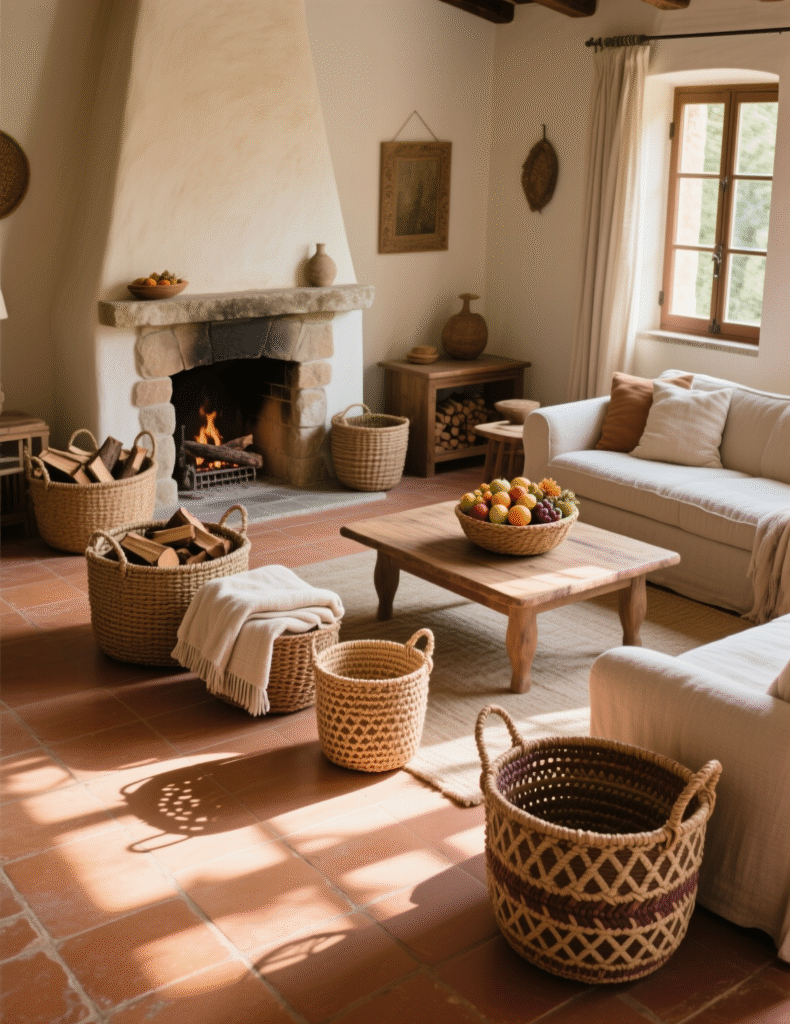
Baskets bring warmth and practicality. A couple near the fireplace holding wood, another with blankets by the sofa, maybe even a tall one with dried flowers.
Wicker, rattan, or handwoven reed—anything with that raw, handmade look.
They’re not just storage. They’re little hints of countryside life.
20. Ceiling Fresco Touches
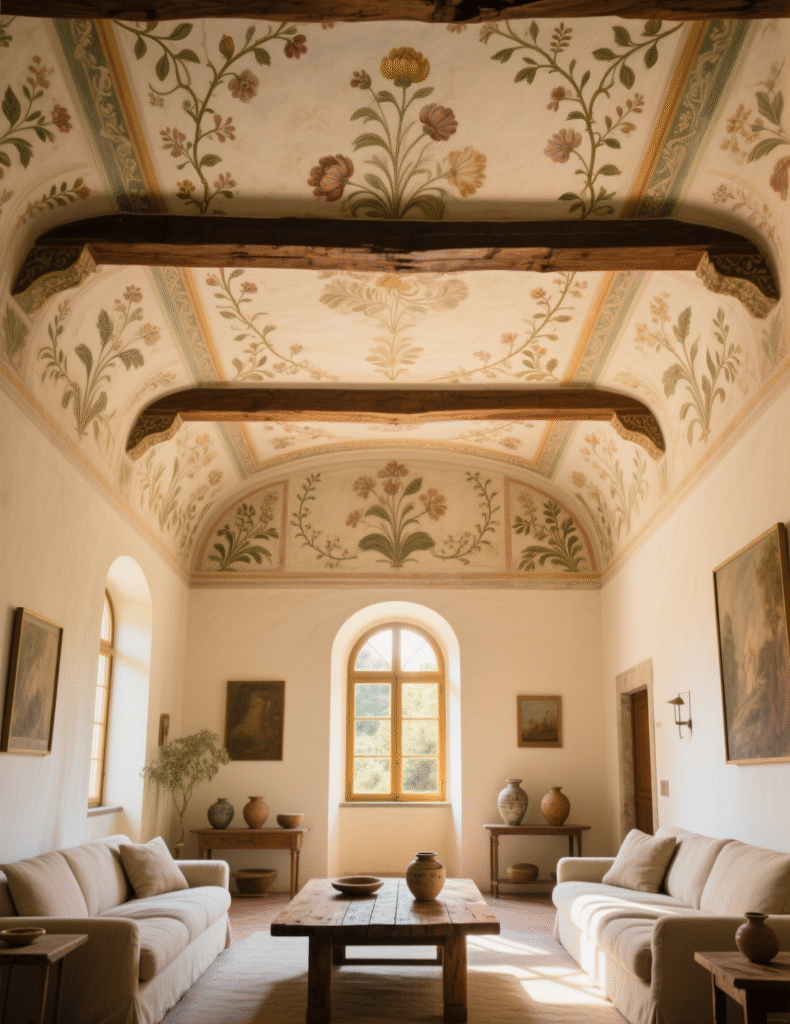
Okay, not a Sistine Chapel replica. But even a small painted medallion around a chandelier, or a stencil detail near the ceiling edges, channels that fresco spirit.
Soft vines, muted florals, or simple scrolls. The design should look faded, like it’s been there for ages.
It pulls the eye upward, reminding you of Tuscan chapels and villas.
Final Thoughts
Now here’s the magic of it all. Tuscan living room decor isn’t about copying exact elements. It’s about capturing the warmth, the sunlight, the imperfection that feels eternal.
When your walls glow, your beams stand proud, and your fabrics carry earth’s tones, you’ll feel it. That little sigh when you sit down. That sense of being somewhere older, slower, but deeply alive.
Your living room doesn’t have to be Tuscany. It just has to feel like it’s kissed by the same sunlight.
And that’s what these 20 ideas are all about.

Emma is a passionate home decor enthusiast and the voice behind Home Evoke. With a keen eye for design and a love for transforming spaces, she shares her expertise and creative ideas to help others create beautiful, functional homes. Through her blog, Emma inspires readers with practical tips, trend insights, and DIY projects that make home styling effortless and enjoyable.

